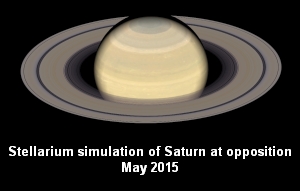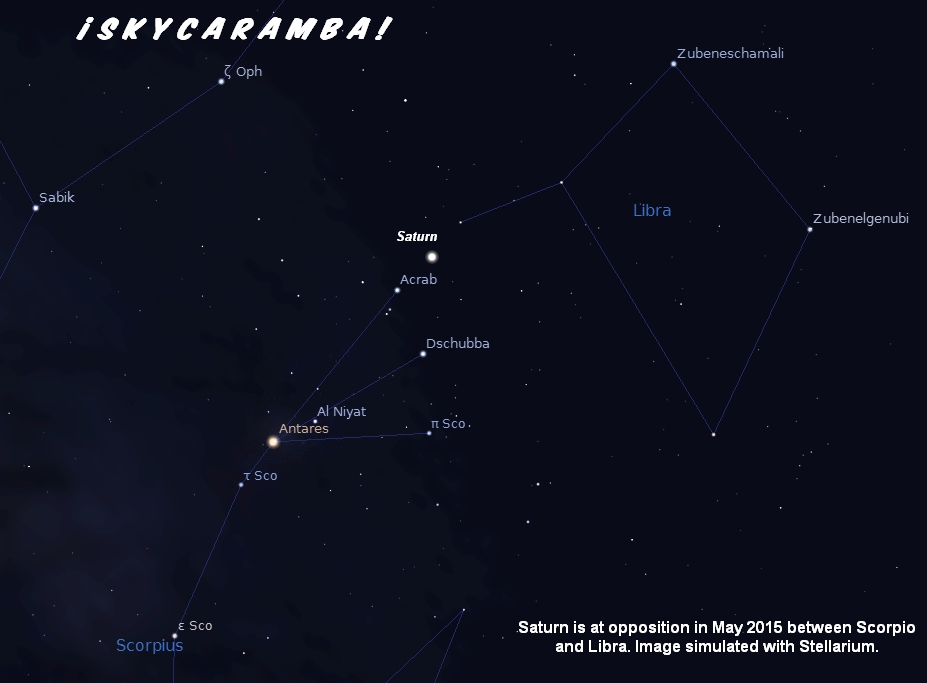¡SkyCaramba! Weekly astronomy blog for the week ending May 23, 2015
 Saturn is at opposition on the 23rd. That means it’s at a point just about opposite the sun in the sky. It will rise as the sun goes down and set as the sun comes up. Oppositions happen when the sun, the earth, and the planet (or other object) at opposition line up with the earth between the other two.
Saturn is at opposition on the 23rd. That means it’s at a point just about opposite the sun in the sky. It will rise as the sun goes down and set as the sun comes up. Oppositions happen when the sun, the earth, and the planet (or other object) at opposition line up with the earth between the other two.
The geometry that puts a planet at opposition also puts it at its minimum distance from Earth for the current orbit. In Saturn’s case, that distance is about nine astronomical units. An astronomical unit is one average earth-sun separation distance. So the ringed planet is nine times as far from us as we are from the sun this weekend.
Saturn orbits the sun in a little less than 29½ years. So when Earth has gone all the way around the sun, Saturn has moved through only about 3.4% of its orbit. That’s enough of a difference that when Earth gets to the same point in its orbit, it’s not between the sun and Saturn again. But it’s a small enough difference that it takes only 12 or 13 more days for Saturn to be at opposition again.
Because a planet at opposition is as close to Earth as it will get, it’s the best time to look at it in a telescope. And people everywhere are amazed to see Saturn’s rings for themselves. This and the rest of Saturn’s oppositions during this decade will give amazing views of Saturn’s rings. The planet’s north pole is tipped about 25° toward us right now.
The rings are made of rocks that orbit tightly in the plane of Saturn’s equator. So we’re getting a fairly wide view of them from the north side compared to the view in 2009 when we saw them edge-on. Or we should say when we didn’t see them, because they’re so thin they virtually disappeared.
You can find Saturn between the claws of Scorpio and the diamond of Libra. It’s moving westward into Libra and will keep doing so until late July. Then it turns around and will continue moving eastward until it’s south of the star Sabik in Ophiuchus next March.
If the viewing’s clear and your telescope has high enough power, you might find at least one of Saturn’s moons. Titan and Tethys are usually easiest to see. I recommend using a software program such as Stellarium to get help identifying which moon or moons you see.
¡SkyCaramba!
